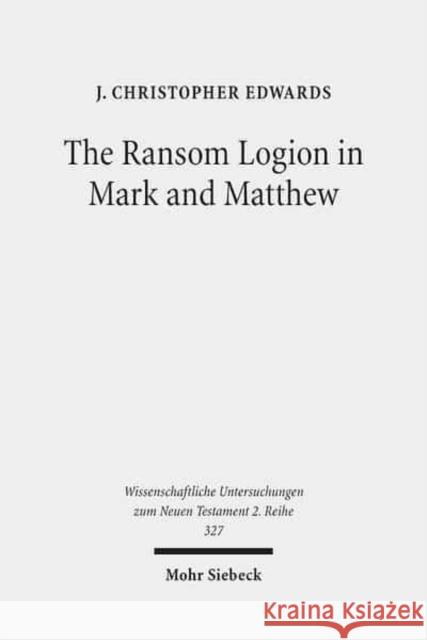The Ransom Logion in Mark and Matthew: Its Reception and Its Significance for the Study of the Gospels » książka
The Ransom Logion in Mark and Matthew: Its Reception and Its Significance for the Study of the Gospels
ISBN-13: 9783161517808 / Angielski / Miękka / 2012 / 191 str.
The ransom logion, as presented in Mark 10:45/Matthew 20:28, is the only place in the synoptic gospels outside the Last Supper where Jesus gives a beneficial interpretation of his upcoming death. This fact has generated much discussion about the authenticity and scriptural background of the ransom logion in Mark and Matthew. However, no one has examined the early reception of the ransom logion, nor has anyone explored the significance of that reception for the critical study of Mark 10:45 and Matthew 20:28. In this study J. Christopher Edwards fills these lacunae by examining the reception of the ransom logion from the New Testament through the third century and by exploring the potential significance of that reception for the critical study of Mark and Matthew. The rationale for this exploration relies on the fact that there are observable patterns displayed in the reception of the ransom logion, which may reflect how it functions in Mark 10:45 and Matthew 20:28.
The ransom logion, as presented in Mark 10:45/Matthew 20:28, is the only place in the synoptic gospels outside the Last Supper where Jesus gives a beneficial interpretation of his upcoming death. This fact has generated much discussion about the authenticity and scriptural background of the ransom logion in Mark and Matthew. However, no one has examined the early reception of the ransom logion, nor has anyone explored the significance of that reception for the critical study of Mark 10:45 and Matthew 20:28. In this study J. Christopher Edwards fills these lacunae by examining the reception of the ransom logion from the New Testament through the third century and by exploring the potential significance of that reception for the critical study of Mark and Matthew. The rationale for this exploration relies on the fact that there are observable patterns displayed in the reception of the ransom logion, which may reflect how it functions in Mark 10:45 and Matthew 20:28.











